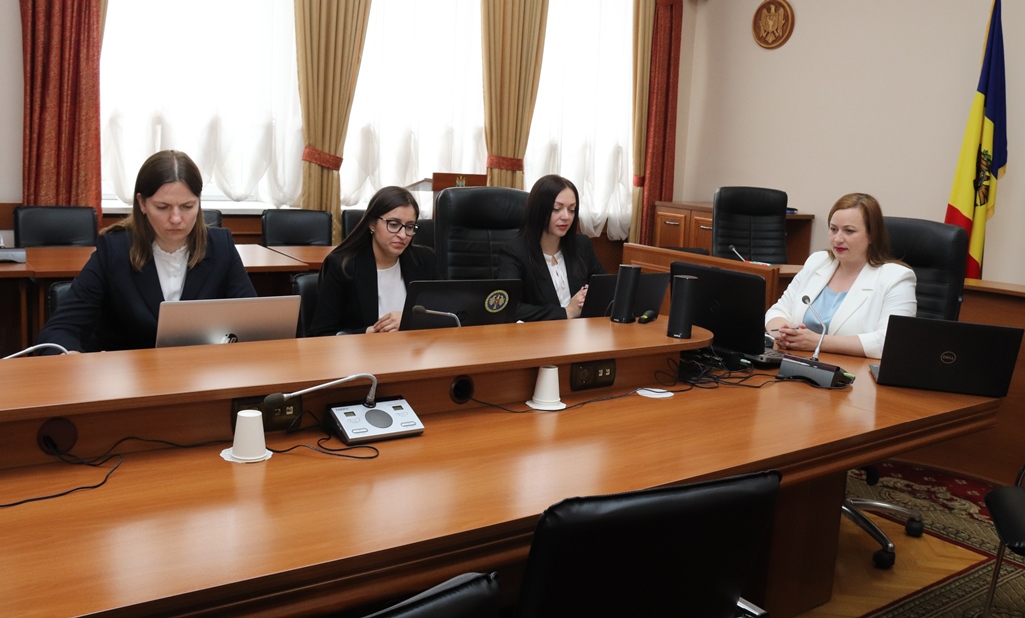
On August 21, the Court of Accounts of the Republic of Moldova (CoARM) examined during an online session the results of the follow-up mission report regarding the evaluation of the level of implementation of the recommendations submitted by the Court of Accounts’ Decision no. 84 from November 30, 2018 "Regarding the Performance Audit Report on the topic: "How do the resources invested in the development and implementation of the Education Management Information System (EMIS) ensure the achievement of the established goal and how can it be improved to achieve the expected impact?"
The follow-up mission included the actions carried out during 2020 – 2023 (I semester) by the entities referred to in the decision of the Court of Accounts no. 84/2018 in order to comply with the submitted audit recommendations, namely: Ministry of Education and Research (MER), Center for Information and Communication Technologies in Education (CICTE), National Bureau of Statistics (NBS), National Agency for Curriculum and Evaluation (NACE), National Agency for Quality Assurance in Education and Research (NAQAER), the Electronic Government Agency (EGA) and 35 district and municipal directorates in the field of education.
The purpose of EMIS is to provide MER and other central public administration authorities, local public administration authorities and educational institutions with updated data on the educational system for the development and implementation of educational policies, monitoring and evaluation of their impact.
The system is to become the only source of data with reference to the educational system. The institutional framework related to EMIS includes:
- MER as owner of the System;
- CICTE as the owner of the System;
- The Public Institution "Information Technology and Cyber Security Service", responsible for the technical administration and maintenance of the System.
At the same time, EMIS registrars, responsible for entering and updating data, are:
- educational institutions;
- local specialized bodies in the field of education;
- Chamber of Commerce and Industry, vocational and technical education institutions.
The previous audit concluded that, although tangible progress was made in the implementation and use of EMIS, a series of problems, deficiencies and dysfunctions were also attested, as well as other factors that affected the proper functionality and sustainability of the System.
Thus, in order to remedy the attested situations, throughout the Decision of the Court of Accounts no. 84/2018, 18 recommendations were submitted to 6 public authorities and institutions, as well as 2 recommendations submitted to the district/municipal directorates of education (out of 35).
Generalizing the results of the follow-up mission, it was stated that 3 recommendations or 17% of those formulated were fully implemented, and 83% of the total recommendations were partially implemented. The partially implemented recommendations were reiterated in the Follow-up Mission Report.
In this context, it was revealed that during the reference period, the concerned entities undertook several actions in order to comply with the recommendations submitted by the CoARM throughout the nominated Decision, among which:
- MER, jointly with CICTE:
- developing and ensuring the approval in the established manner of the related EMIS Concept;
- drafting and ensuring coordination with EGA of the draft Regulation on its use, administration and development;
- development of new functionalities and modules of the System;
- the regular issuance of Orders by the MER regarding the updating of data and ensuring their quality;
- ensuring EMIS integration with some government services (MPass, MConnect and MNotyfi on the test environment);
- excluding the duplication of the introduction of certain categories of data by integrating EMIS with 2 IS owned by CICTE and the National Agency for Curriculum and Evaluation.
At the same time, it was found that NAQAER and NACE were connected to EMIS to ensure the utilization of data as needed.
- District/municipal directorates of education:
- organizing and conducting training for administrators and users at the level of educational institutions;
- providing the necessary ongoing technical assistance;
- designation by order of the institution/district, municipal directorate of users according to roles;
- inclusion in the job description of responsibility for using EMIS, etc.
At the same time, the audit stated some deficiencies and malfunctions of the general controls and those of the EMIS application, especially regarding insufficient and inadequate management of EMIS access, changes, problems and incidents, etc.
- the lack of formalized procedures regarding the management and processing of statistical data in education, which would ensure the unification of the definitions/notions used by MER and NBS, for each of the indicators presented in the field and how to quantify them;
- failure to ensure full completion of data in the EMIS;
- deficiencies in user administration at every level;
- lack/insufficiency of exhaustive and explicit instructions on how to complete and extract data in EMIS;
- creating in the System a large number of reports that are not used;
- the implementation of information systems and platforms similar to EMIS functionalities/modules by some institutions and departments in the field of education (e-admission, e-school, e-Agenda), which diminishes the efficiency of resources.
It was also found that, during the reference period, the exercise by ITCSS of the duties of technical administrator and maintenance of EMIS, as well as ensuring its cyber security, was not ensured.
In the end, the Court of Accounts concluded that, although the concerned entities carried out certain actions, they did not fully ensure the implementation of the recommendations submitted by the previous audit. At the same time, some measures taken during the reference period create the necessary conditions to improve the observed situation.
 WITH DEFICIENCES OF VIEW
WITH DEFICIENCES OF VIEW Youtube
Youtube Facebook
Facebook


 print
print

.jpg)


